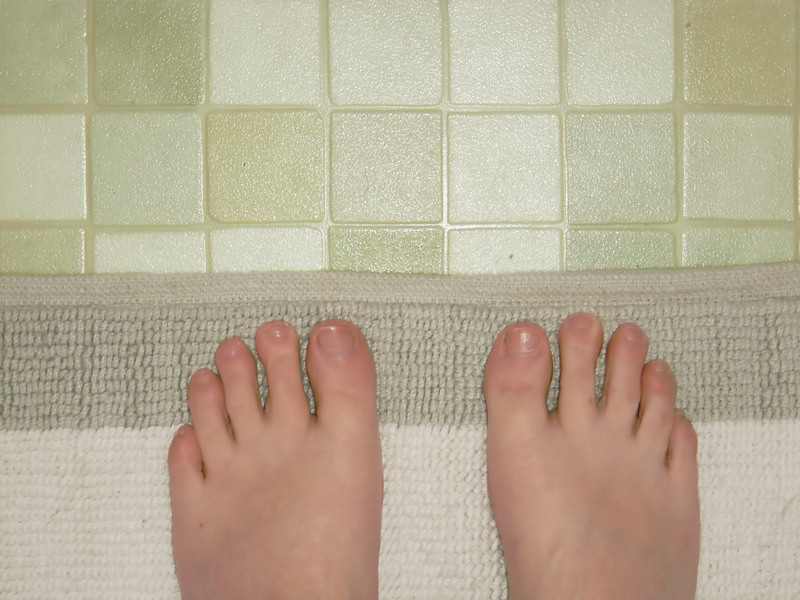Practical Ways to Ensure a Mold-Free Bathroom Space
Posted on 25/08/2025
Practical Ways to Ensure a Mold-Free Bathroom Space
Keeping your bathroom mold-free is essential for creating a healthy, comfortable living environment. Bathrooms are naturally prone to high humidity and moisture, which make them the ideal habitat for mold and mildew growth. Thankfully, by applying some practical strategies and habits, you can significantly reduce the risk of mold infestation in your bathroom. This comprehensive guide explores practical ways to keep your bathroom mold-free, maintain a healthy atmosphere, and keep your bathroom sparkling clean.
Why Mold Is Such a Big Problem in Bathrooms
Mold doesn't just look unsightly--it can also pose significant health risks and cause structural damage. In the bathroom, moisture from showers, baths, and sinks creates the perfect environment for mold spores to thrive. Mold in bathrooms can appear on ceilings, walls, tile grout, under sinks, and even behind furniture or walls, making it one of the most challenging household issues to detect and eliminate.
- Health Risks: Mold spores can trigger allergies, respiratory issues, and other health complications, especially in sensitive individuals.
- Structural Damage: Over time, mold can degrade drywall, flooring, and wood, leading to costly repairs.
- Persistent Odors: Hidden mold creates a musty, unpleasant smell that can linger despite cleaning efforts.
Keeping your bathroom free from mold is more than just cleaning--it's about prevention, ventilation, and regular maintenance.

Effective Ventilation: The Key to Mold Prevention in Bathrooms
Among the most practical tips for a mold-free bathroom, proper ventilation tops the list. A well-ventilated bathroom prevents moisture from accumulating, reducing the chances of mold forming.
Install or Upgrade an Exhaust Fan
An exhaust fan is a must-have in every bathroom. Choose an appropriately sized exhaust fan based on your bathroom's square footage. Run the exhaust fan:
- During each shower or bath: Always leave it on for at least 30 minutes after finishing to expel humid air.
- After cleaning: Ventilate the space to help surfaces dry quickly.
Consider upgrading to a humidity-sensing fan that turns on automatically whenever the moisture levels rise, offering continuous protection against mold.
Open Windows and Doors
If your bathroom has windows, open them while showering and for some time afterward. This simple action boosts air flow, helping to dry out the space faster. Leaving the door slightly open can also encourage moisture to dissipate more quickly.
Utilize a Dehumidifier
In bathrooms without windows or efficient fans, a portable dehumidifier can make a substantial difference. Set it up to operate after showers or baths, especially in bathrooms with poor air circulation.
Smart Habits for Maintaining a Mold-Free Bathroom Environment
Daily habits and consistent routines play a central role in keeping bathroom mold at bay. Here are some highly effective and easy-to-adopt tips:
Wipe Down Surfaces Regularly
- Use a squeegee or microfiber cloth to wipe down shower walls, glass doors, and tiles after each use.
- Dry counters and sinks to eliminate droplets where mold could take hold.
Fix Leaks Promptly
- Inspect faucets, showerheads, and pipes for leaks--even a small drip can cause mold to form over time.
- Check underneath sinks and around toilet bases regularly for hidden moisture issues.
Reduce Clutter
- Shower caddies, shampoo bottles, and sponges can trap moisture and organic material, providing an ideal mold breeding ground.
- Organize and store products correctly--prefer wall-mounted racks and ensure items dry between uses.
Wash Bathroom Textiles Frequently
- Rinse and dry bath mats, towels, and shower curtains routinely.
- Choose quick-drying materials wherever possible, and avoid leaving damp items in the bathroom for extended periods.
Material Choices That Discourage Mold Growth
The materials you choose for your bathroom can have a profound impact on mold prevention. When building or renovating, opt for surfaces that repel water and resist humidity.
Tile and Grout
- Ceramic or porcelain tiles are less likely to harbor mold compared to porous natural stones.
- Seal grout lines every six months to prevent water penetration.
Mold-Resistant Paint
- Use paints labeled as "mold-resistant" or with antimicrobial properties, especially on ceilings and walls.
- For extra protection, add a mildew-resistant additive to your paint.
Waterproof Flooring
- Install vinyl, porcelain, or sealed stone flooring for easy cleaning and minimal moisture absorption.
Replace Damaged Caulk and Sealant
- Regularly inspect and replace caulk and sealant around tubs, showers, and sinks. Deteriorated or cracked caulk can collect moisture, increasing the risk of mold.
Powerful Cleaning Practices: Your Frontline Defense
Regular cleaning is crucial for preventing bathroom mold. Incorporate these methods into your weekly and monthly cleaning routines for the best results.
Clean With Anti-Mold Solutions
- Use a bathroom cleaner containing mold-fighting agents, such as bleach, hydrogen peroxide, or vinegar. Always follow manufacturer instructions and never mix chemicals.
- Create a DIY solution: Mix equal parts white vinegar and water in a spray bottle for a natural mold-preventing spray.
Focus on Mold Hotspots
- Tiles, grout, and corners: Scrub these areas with a brush to remove invisible mold spores.
- Under sinks and behind toilets: Don't neglect hidden zones where moisture can collect.
Preemptive Cleaning for Shower Curtains and Liners
- Wash fabric and plastic curtains in hot water once a month--add baking soda or vinegar for enhanced cleaning.
- Replace liners that show signs of mold or heavy staining.
Natural Methods for Mold-Free Bathrooms
If you prefer to avoid chemical cleaners in your bathroom, there are several eco-friendly methods that help maintain a mold-free bathroom environment:
- Tea Tree Oil: Add a teaspoon of tea tree oil to a cup of water in a spray bottle. Mist affected areas and let them dry. Tea tree oil is a natural fungicide.
- Baking Soda: Make a paste with baking soda and water. Spread onto grout or suspect areas, scrub gently, then rinse off.
- Lemon Juice: The natural acidity of lemons helps break down mold on nonporous surfaces--just apply, allow to sit, and wipe clean.
Long-Term Solutions for Lasting Bathroom Mold Prevention
Mold can be tenacious, and sometimes underlying issues contribute to persistent outbreaks. Consider these long-term strategies for a consistently healthy, mold-free bathroom:
- Upgrade Bathroom Fixtures: Modern low-flow toilets, touchless faucets, and efficient showerheads reduce excessive moisture.
- Check Insulation: Proper insulation behind walls can reduce condensation, a hidden source of mold spores.
- Add Waterproof Membranes: If renovating, apply a waterproof membrane under tiles in showers and on bathroom floors.
- Incorporate Moisture Sensors: Moisture alarms can alert you to leaks or water accumulation before it becomes a mold problem.
What To Do if You Find Mold in Your Bathroom
Sometimes, despite your best efforts, mold might still appear. Here's how to handle it:
- Assess the Extent: If the affected area is less than 10 square feet, most homeowners can handle it themselves.
- Clean Thoroughly: Use an anti-mold cleaner or natural solution to remove visible mold. Wear gloves and a mask to avoid inhaling spores.
- Replace Damaged Materials: Severely affected drywall, insulation, or carpets should be replaced.
- Address Root Causes: Investigate and fix leaks, poor ventilation, or other moisture issues so the problem doesn't return.
- Consult a Professional: If the mold covers a large area or keeps returning, a mold remediation specialist can identify hidden issues.

Seasonal Bathroom Maintenance Checklist for Mold Prevention
Incorporating seasonal maintenance into your routine can proactively address potential mold problems before they start.
- Check exhaust fans for dust buildup--clean or replace filters as needed.
- Inspect grout, caulk, and tile for cracks or deterioration--re-seal or repair as necessary.
- Clean all vents and air ducts to ensure proper airflow.
- Review all plumbing fixtures for drips, leaks, and seepage.
- Look for condensation on walls or windows; improve insulation if needed.
Summary: Your Mold-Free Bathroom Action Plan
Ensuring a mold-free bathroom space comes down to a combination of smart daily habits, effective ventilation, mindful material selection, and periodic deep cleaning. The best defense is prevention--keep moisture under control, address leaks quickly, keep surfaces clean, and ventilate well. For stubborn cases, don't hesitate to seek professional help to keep your bathroom and home healthy for everyone who lives there.
By following these practical ways to keep your bathroom mold-free, you'll not only protect your home but also enhance your well-being, creating a space that feels as good as it looks. For more expert tips on home maintenance and bathroom mold prevention, be sure to stay updated with our latest guides!





